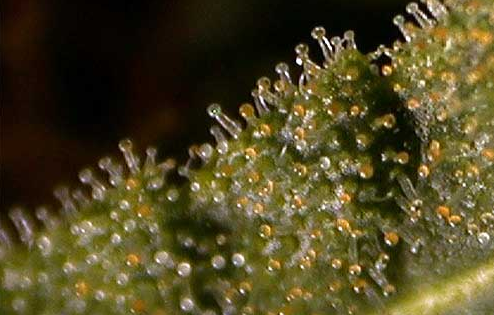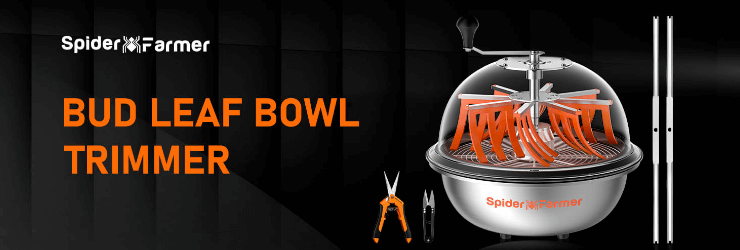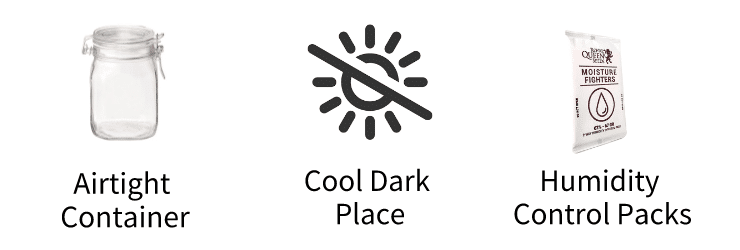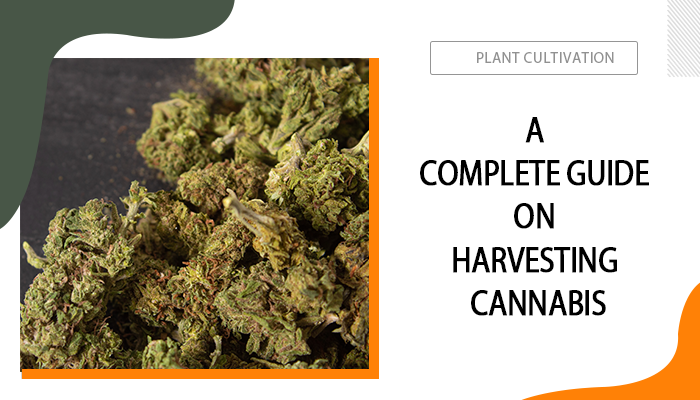How to Harvest Cannabis: Dry, Trim, Cure
Harvesting cannabis is more than just cutting down plants. It's a meticulous process that, if done correctly, ensures you get the best out of your crop. However, we do know it’s a bit challenging for beginners, as many of you are afraid of ruining the whole weed. Relax, we’ve got your back by offering this complete guide on harvesting cannabis. Let’s start!
Table of Contents
When to Harvest Marijuana
When to harvest cannabis depends on the specific type of cannabis plant being cultivated. There are three primary cannabis species: sativa, indica, and hybrid. If you're wondering about the optimal time for harvesting cannabis, it's important to note that each species has its own characteristics.
Indica Weed
Indica cannabis plants have a higher concentration of CBD compared to THC. Typically, indica varieties require a shorter flowering period, usually falling within the range of 8 to 10 weeks. This shorter flowering time makes them a preferred choice for growers seeking quicker yields.
Sativa Weed
Sativa cannabis plants are known for their energizing and uplifting effects, offering a more cerebral and creative high. They tend to have a higher THC to CBD ratio. Sativa varieties generally take longer to reach maturity, typically ranging from 10 to 16 weeks during the flowering phase. Their longer weed growth cycle can result in larger plants with higher yields.
Hybrid Weed
Hybrid cannabis strains are a crossbreed of indica and sativa plants, combining characteristics from both varieties. The harvesting time for hybrid strains falls between the ranges of indica and sativa, depending on the particular hybrid's genetics. It can be anywhere from 8 to 16 weeks, with some hybrids leaning more towards the indica side and others towards the sativa side in terms of growth and effects.
To determine if your plants are ready for harvest, observe the trichomes on the flowers. Trichomes are tiny structures that contain cannabinoids like CBD and THC. When they change from clear to milky white, it's a sign that the plant has reached peak maturity and can be harvested. Use a magnifying glass or a trichome viewer for a closer look.

Amber/golden trichomes
How to Harvest Weed
Once your cannabis plants have reached their peak maturity, generally when amber trichomes cover all the plants, you may follow the guide to start harvesting cannabis.
Step 1: Identify Where to Harvest
A weed plant consists of three main parts: the stem, roots, and flowers. The stem transports nutrients from the roots to the flowers and provides structural support. The roots supply essential nutrients for the plant's growth, while the flowers contain valuable compounds such as terpenes, cannabinoids, and flavonoids, which are harvested and consumed for their benefit.
Therefore, you should carefully spot all flowers and get ready to cut them off.
Step 2: Harvesting the Cannabis Plants
To harvest cannabis, you'll need to cut the stem at its base, ensuring not to uproot the entire plant. Uprooting can harm the roots and reduce the weed yield. Properly cut the stem at its base to collect the mature plant.
Step 3: Trim Buds with Handy Equipment – Bud Trimmer
Trimming buds typically involves removing the large fan leaves, sugar leaves, and any excess stems from the buds. This can be done using a sharp pair of scissors or a trimming tool specifically designed for this purpose. The goal is to remove any non-essential plant material that detracts from the appearance and potency of the buds.
When trimming buds, using scissors takes a lot of your time. If you have time constraints, we recommend you use Spider Farmer Bud Leaf Bowl Trimmer, which can help you trim the buds quickly and keep the buds in a clean environment.

And we recommend the wet pruning method. With wet trimming, the buds are stickier when handled and the trichomes remain intact, thus preserving the terpenes and flavor in the final product. On the contrary, the buds are more brittle after drying and the trichomes tend to break, even easily destroying the active ingredients and taste.
Step 4: Dry Buds in the Right Environment
After trimming, dry the buds on a rack in a cool, dark, ventilated area. The ideal drying temperature is between 60-70 degrees Fahrenheit and 45-55% humidity, which will ensure that the buds are in a dry environment. Typically, it takes 5-10 days to completely dry buds.
However, buds must be checked daily to see if they can be removed from the drying area. You can do this by gently bending the stem; if it breaks rather than bends, the buds are ready to move to the next stage of the curing process. It is important to avoid over-drying the buds, as this can cause them to lose potency and flavor.
Step 5: Curing and Storing Cannabis Buds
You have two options for curing and storing cannabis buds: indoors or outdoors.
Indoor Curing: If you choose to cure indoors, you can control humidity and temperature more effectively. Maintain humidity levels between 40% and 60% to preserve flavor and potency. Avoid excessive humidity, which can reduce flavor, and low humidity, which can make buds dry and brittle.

Outdoor Curing: When curing outdoors, consider the external temperature and humidity. If it's too cold, curing takes longer, and bud strength may decrease. If it's too hot, buds can dry out quickly and lose flavor. Keep buds out of direct sunlight during outdoor curing.
Step 6: Proper Storage of Buds
To store cannabis buds, it’s best to keep them in an airtight container in a cool, dark place, away from moisture and direct sunlight. Glass jars with airtight lids work well for this purpose. You can also add a humidity pack to help regulate the moisture level inside the jar. It’s important to avoid storing buds in plastic bags, as they can create a static charge that can damage the trichomes and compromise the potency of the buds.

FAQs about Harvesting Cannabis
How long does it take from bud to harvest?
The time it takes from the initial appearance of buds (the flowering stage) to the actual harvest varies depending on the cannabis variety.
- Sativa Weed: 10 to 16 weeks
- Indica Weed: 8 to 10 weeks
- Hybrid Weed: 8 to 16 weeks
Does harvesting stop bud rot?
Harvesting can help prevent further development of bud rot or moldy weed, but it may not completely stop it if it has already begun. Bud rot is often a result of excess humidity, poor ventilation, or other environmental factors. Harvesting can prevent the issue from spreading to the rest of the plant, but proper drying and curing are equally crucial to prevent mold during storage.
How do you flush buds after harvesting?
Flushing is a process used before harvesting to remove excess nutrients and minerals from the cannabis plant, resulting in a smoother and better-tasting final product. To flush buds after harvesting, follow these steps:
- Use plain, pH-balanced water (typically pH 6-7).
- Flush the plant by thoroughly watering it with the plain water. Ensure that the runoff water is clear, indicating that excess nutrients have been washed away.
- Continue flushing for a period of 1 to 2 weeks before harvest. This helps the plant use up any remaining nutrients stored in its tissues.
- Monitor the pH and EC (electrical conductivity) of the runoff water to ensure it stays within the desired range.




